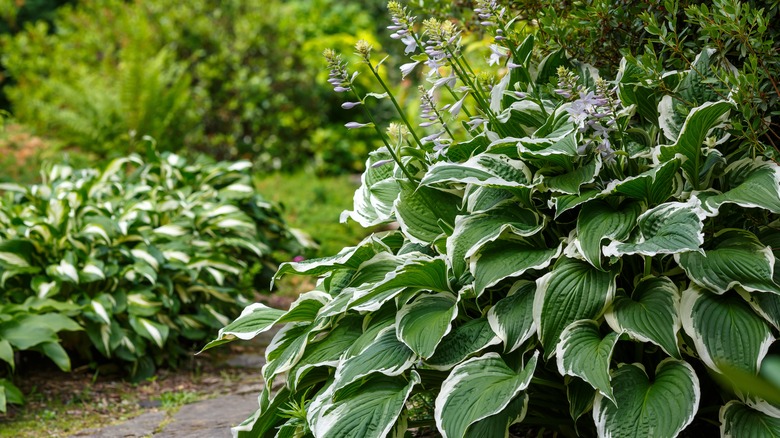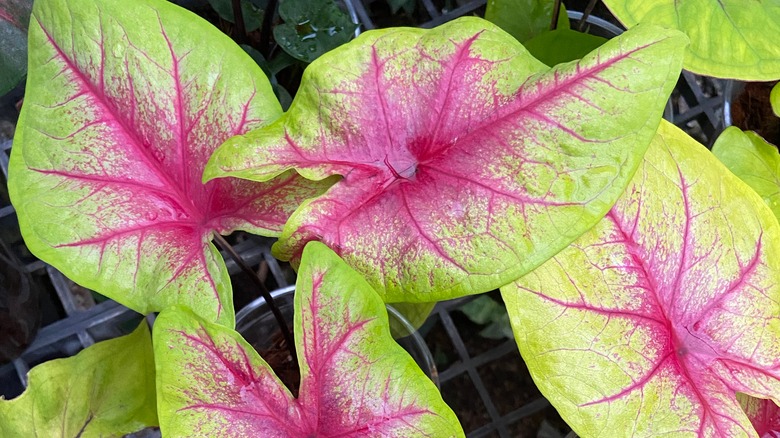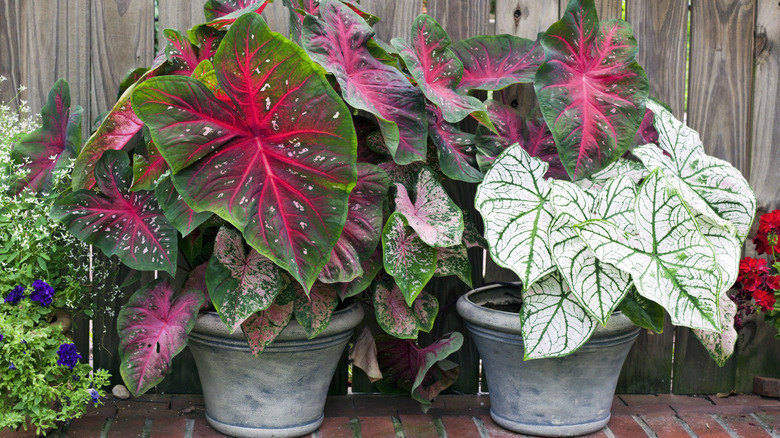Add Some Zest To Your Garden Hostas With This Lemony Fresh Companion Plant
If you love how your hostas brighten up the shady spots in your garden with their large leaves that come in a variety of different colors, you're going to adore pairing them with this lemony fresh companion plant: Caladium 'Lemon Blush'. It's one of those stunning new plants to add to your garden that you probably haven't heard of and will add some colorful zest to your yard.
'Lemon Blush' has been bred to grow particularly well in the shade which means that it will pair beautifully with your hostas that enjoy much the same conditions. This plant is prized for its large heart-shaped leaves in the attractive color combinations of rose red centers with pale green fading out to lemony yellow margins. This means that it will look amazing when you grow it alongside Hosta 'Blazing Saddles' with leaves that have green centers and cream edges, or Hosta 'Undulata' with creamy white wavy leaves that fade out to bright green. Here's everything you need to know about 'Lemon Blush' and how to grow it in your garden.
Outstanding features of Caladium 'Lemon Blush'
Caladiums are stunning tropical plants that have bold, colorful leaves and 'Lemon Blush' is an outstanding cultivar that has been bred as part of the Heart to Heart range by Classic Caladiums in Florida. It can reach a height of 20 inches and a spread of around 14 inches. This plant also loves the heat and is deer-resistant, as well.
Caladium species are native to Central and Northern South America and can be grown year-round outdoors in USDA hardiness zones 10 through 11. However, since these plants grow from tubers, they can be dug up once temperatures start to drop elsewhere in the country and then replanted again in spring once the danger of frost has passed. You can also grow 'Lemon Blush' in a container and bring it indoors over the winter. In fact, caladiums are one of those outdoor plants that also thrive indoors. Just be aware when handling these plants that they're toxic to humans and animals because they contain calcium oxalate crystals, so keep them away from your children and pets. Skin contact with the plant sap can also cause irritation, so it's best to wear gloves when you're handling caladiums.
How to care for your Caladium 'Lemon Blush'
You can plant your 'Lemon Blush' tubers in a shady spot in the garden once temperatures are above 50 degrees Fahrenheit and there's no danger of frost. The tubers should be planted with the pointed end facing upwards, and the top should be around 2 inches below the level of the soil. It's important to get the depth right because the roots actually grow from the top of the tuber, as do the leaves. Once planted, make sure that you give your plants plenty of moisture as they don't like to dry out. Lack of moisture will make the leaves turn yellow and drop off the plant, but you also want to ensure that the soil can drain freely as these plants don't like soggy soils, either.
Caladiums are relatively low maintenance and don't require a lot of fertilizer. In fact, too much fertilizer can easily burn the leaves. Ideally, use a fertilizer specifically formulated for flowering plants and only apply it at ¼ strength. If using a liquid fertilizer, it's fine to just apply it every couple of weeks. As these plants also do well in pots, you might like to get a little creative and pair 'Lemon Blush' with your favorite hosta in the same container. This will allow you to mix and match different color combinations and create stunning displays as perfect container plants for your shady front porch.


